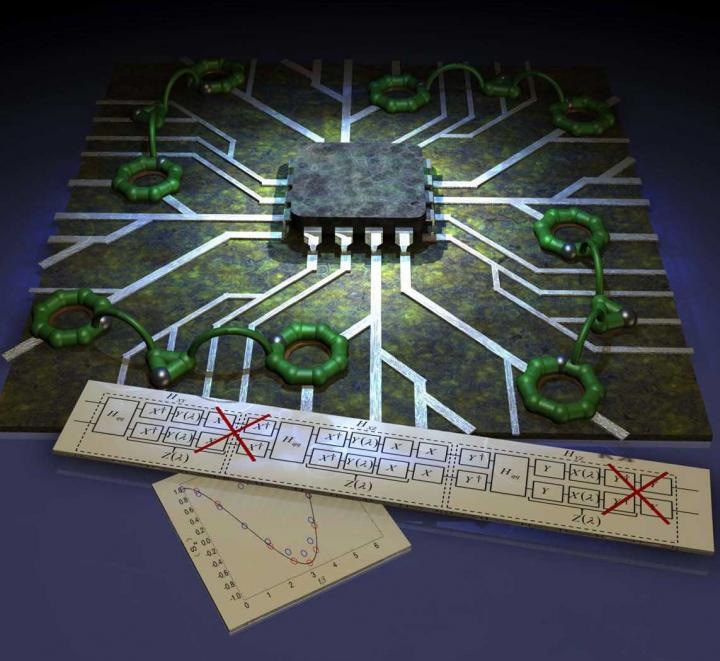Nov 11 2016
 An integrated circuit shows the inclusion of molecular spin qubits for the implementation of entangling quantum gates. Design by Dr. Christopher Muryn
An integrated circuit shows the inclusion of molecular spin qubits for the implementation of entangling quantum gates. Design by Dr. Christopher Muryn
Quantum computing is on the verge of becoming more complex. Researchers have proof that large molecules made of chromium and nickel can both store and process information in a manner similar to that performed by bytes for digital computers.
In the November 10 issue of Chem, the researchers presented algorithms proving the possibility of using supramolecular chemistry to connect "qubits," the fundamental units for processing quantum information. This approach will help generate numerous varieties of stable qubits that could be linked together into structures called "two-qubit gates."
We have shown that the chemistry is achievable for bringing together two-qubit gates. The molecules can be made and the two-qubit gates assembled. The next step is to show that these two-qubit gates work.
Richard Winpenny, Head of the School of Chemistry, University of Manchester
Standard computers organize and store information in the form of bits, which are then written in long chains of 0s and 1s. Quantum computers use qubits, which can be 1, 0, or any superposition between those numbers at the same time, enabling researchers to carry out more extremely powerful computations. However, large assemblies of qubits that are adequately stable and suitable to perform algorithms are yet to be discovered.
This problem has been addressed through algorithm designs developed by Winpenny and his associates. These designs combine large molecules in order to develop both two qubits and a bridge existing between the units, called a quantum gate.
All of these gates are held together through supramolecular chemistry. Studies on these gates highlight that the quantum information is stored in separate qubits for a very long time to permit manipulations of the information and hence algorithms. The coherence time refers to the time information that can be stored.
Say you're in a bar and you're trying to bring two pints of beer back to your friends without spilling it. But the bar is filled with drunks who are singing, jumping around, and dancing. The coherence time is a measure of how far you can get the beer without spilling it. You want the bar to be very well behaved and very stationary so you can walk through the pub and get back to the table, just like we want the qubits to be stable long enough so we can store and manipulate information. The real problem seems to be whether we could put these qubits together at all. But we showed that connecting these individual qubits doesn't change the coherence times, so that part of the problem is solvable. It's achievable to create multi-qubit gates, and we're hoping it inspires more scientists to move in that direction.
Richard Winpenny, Head of the School of Chemistry, University of Manchester